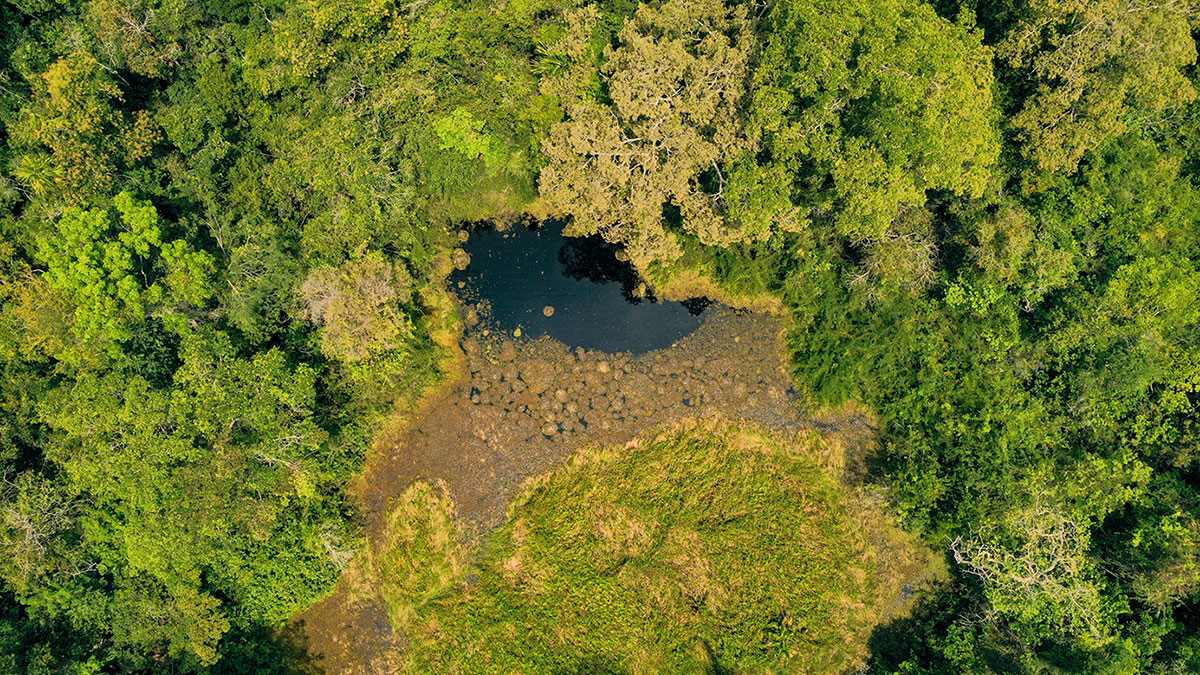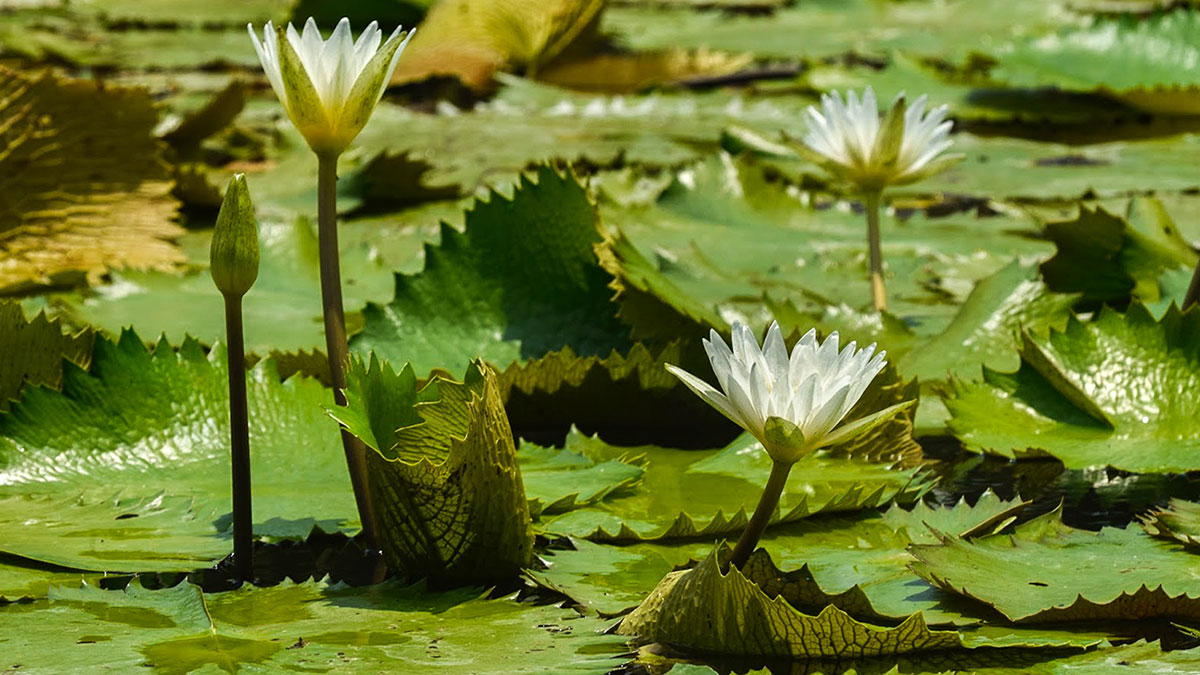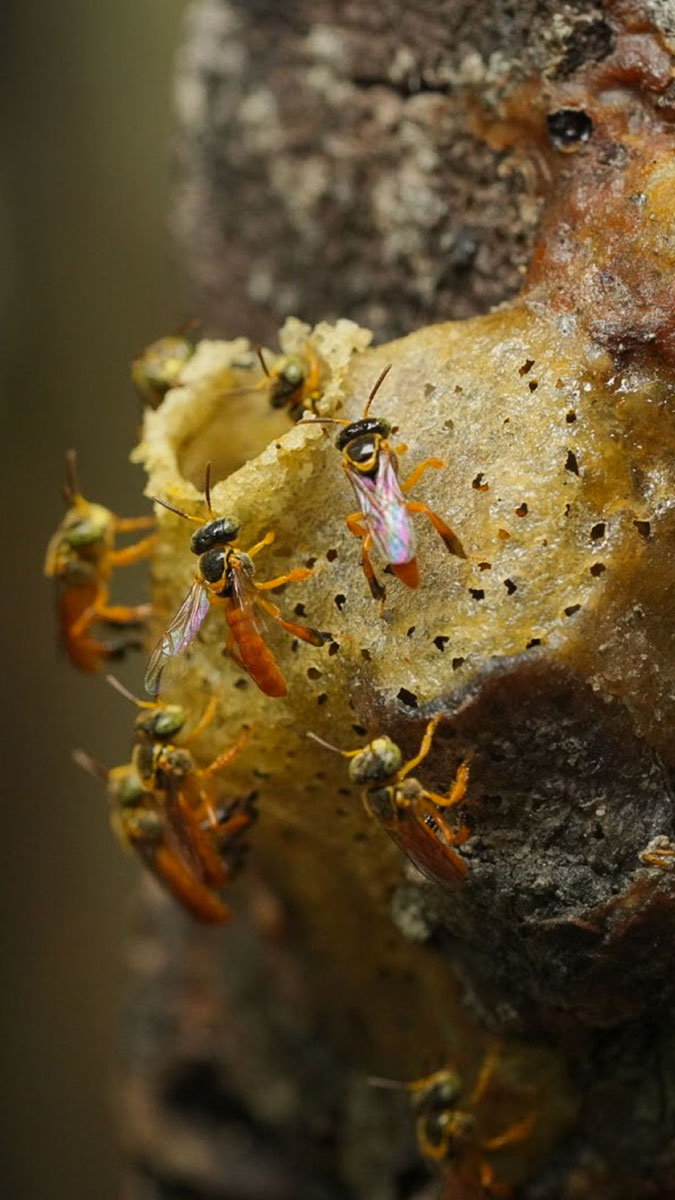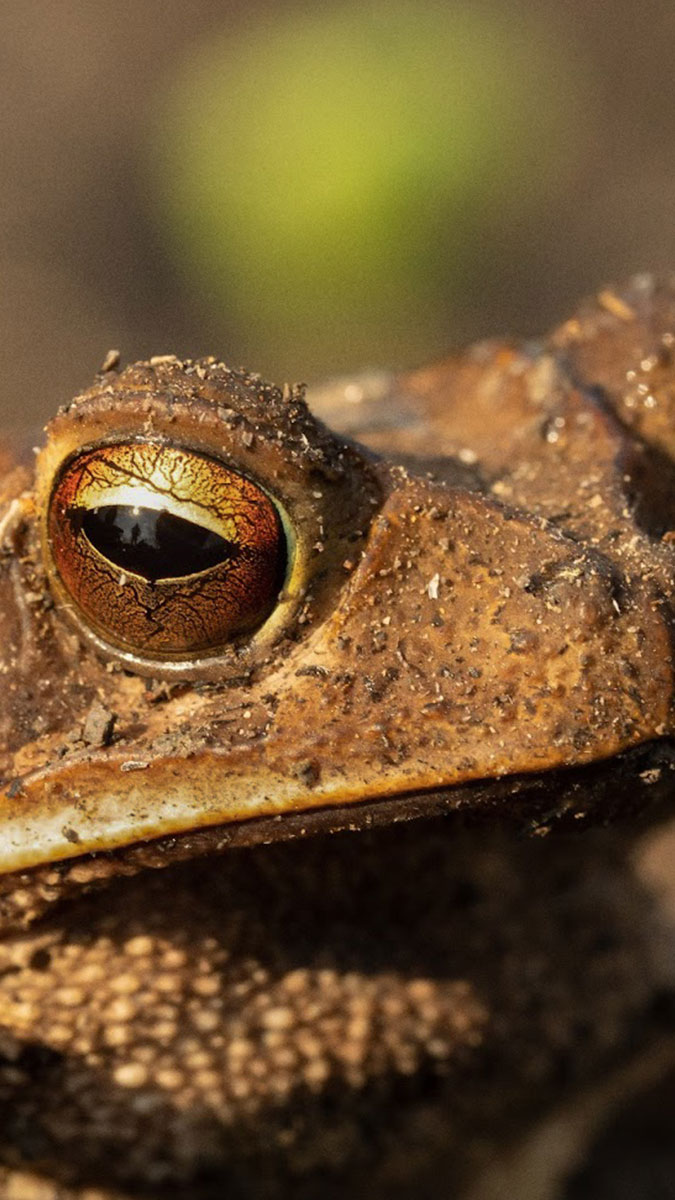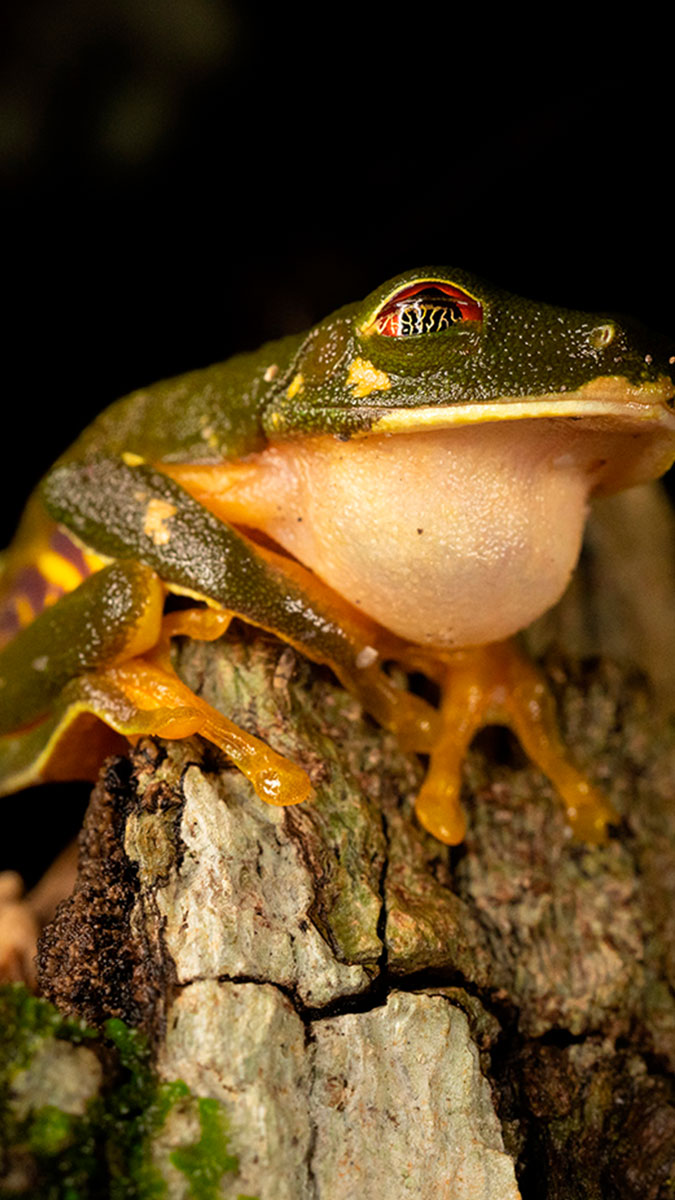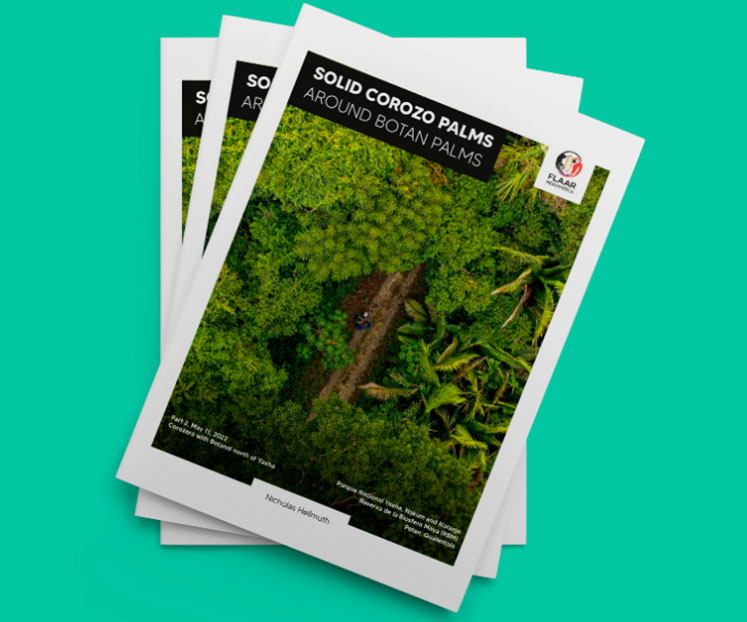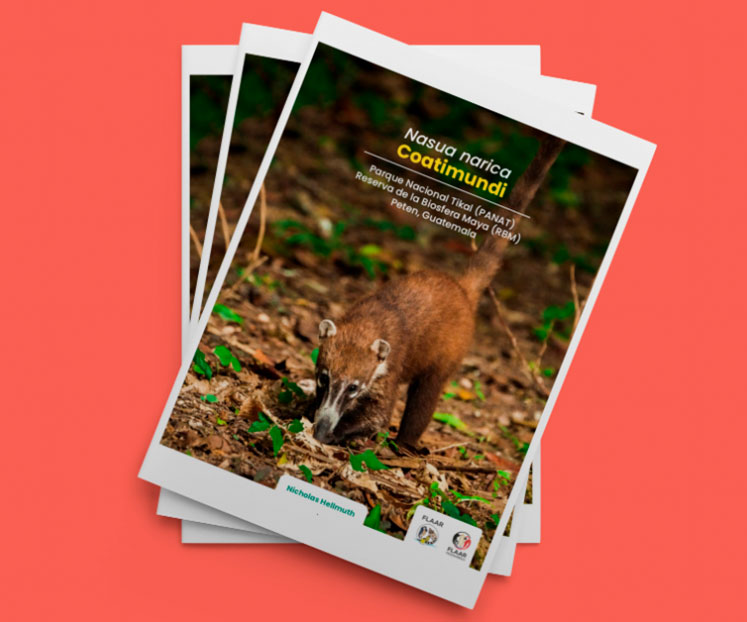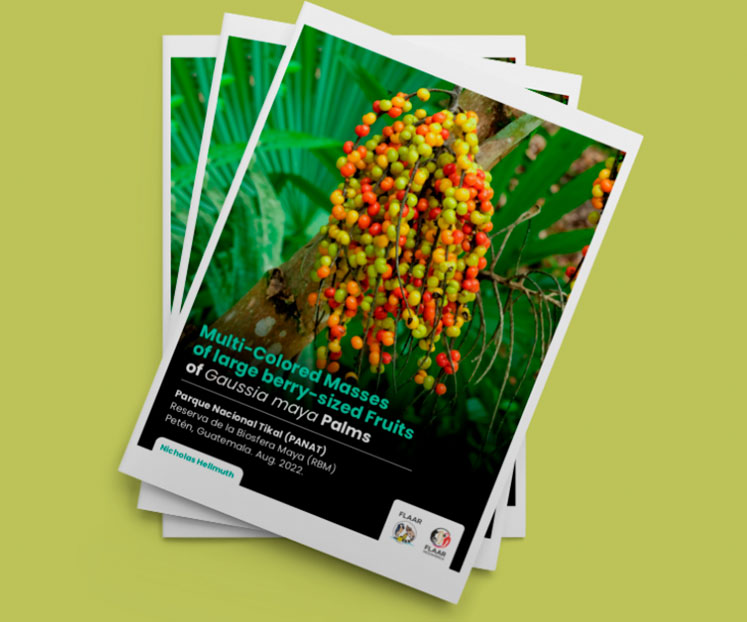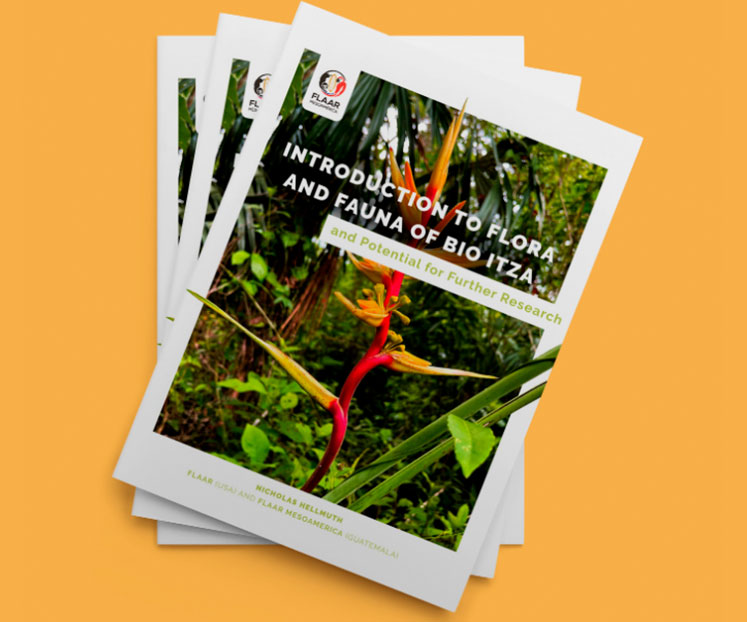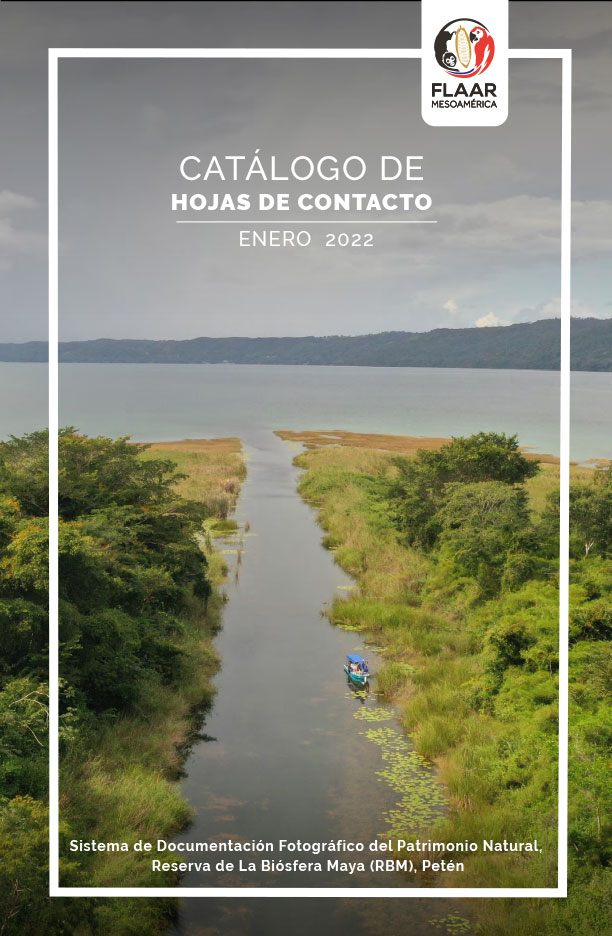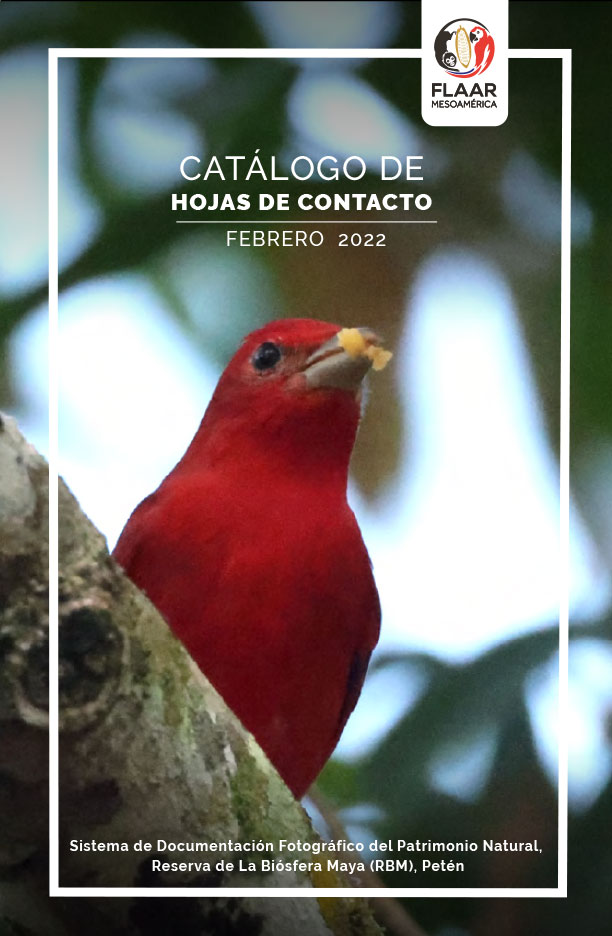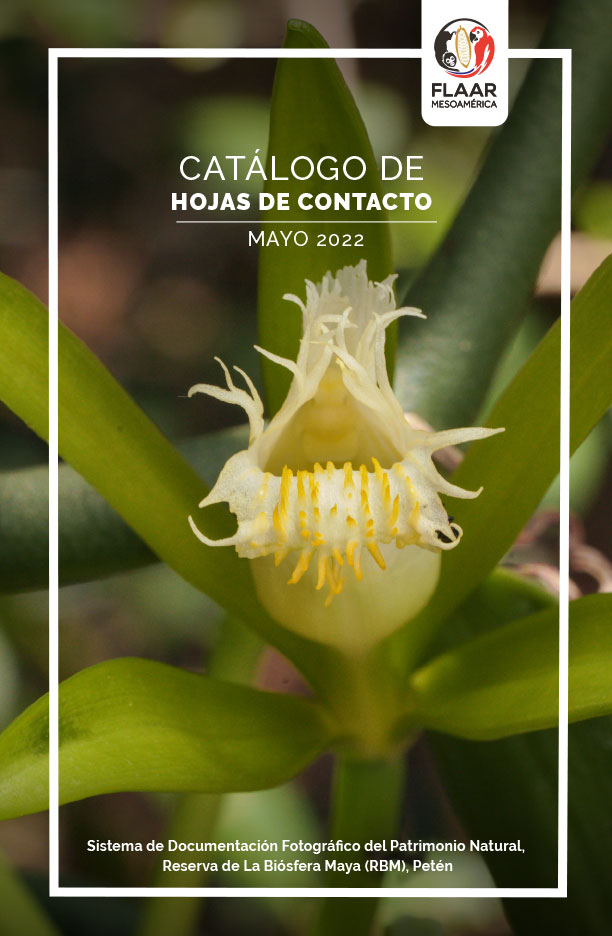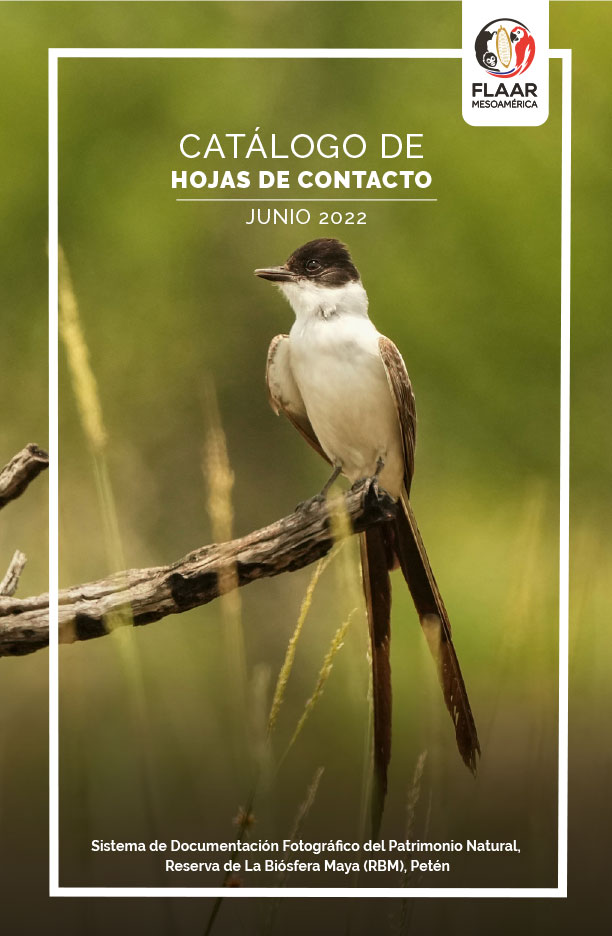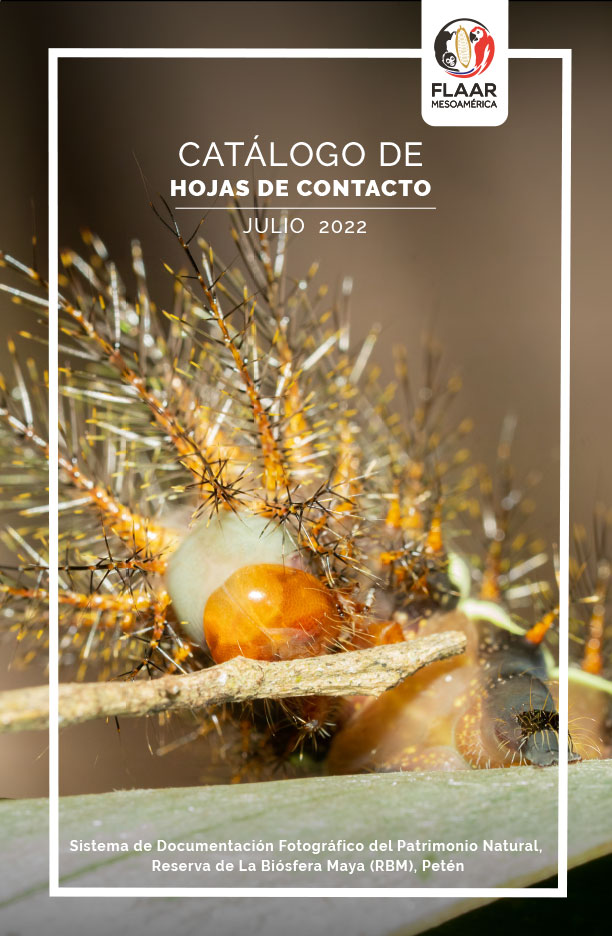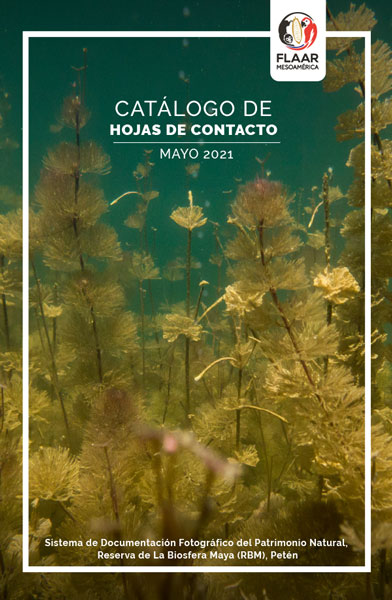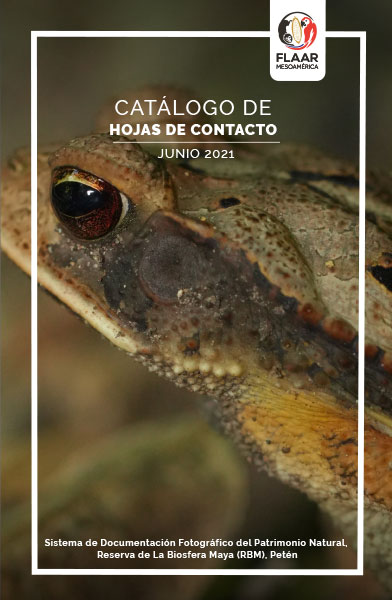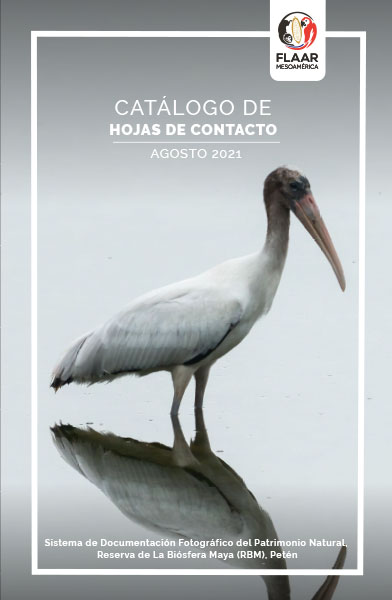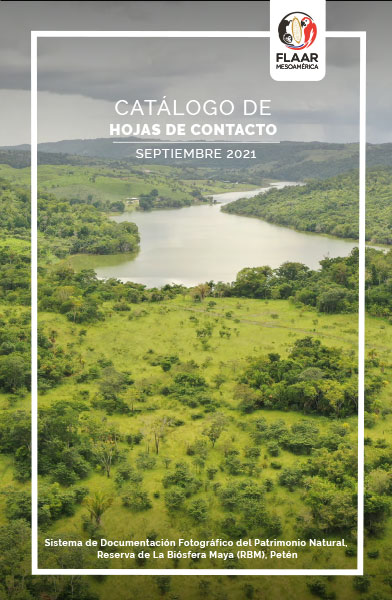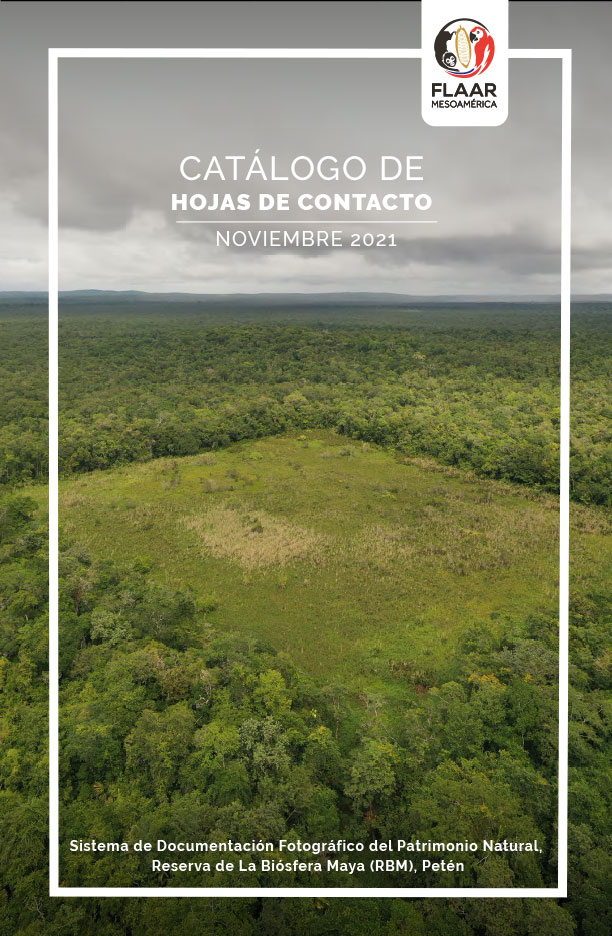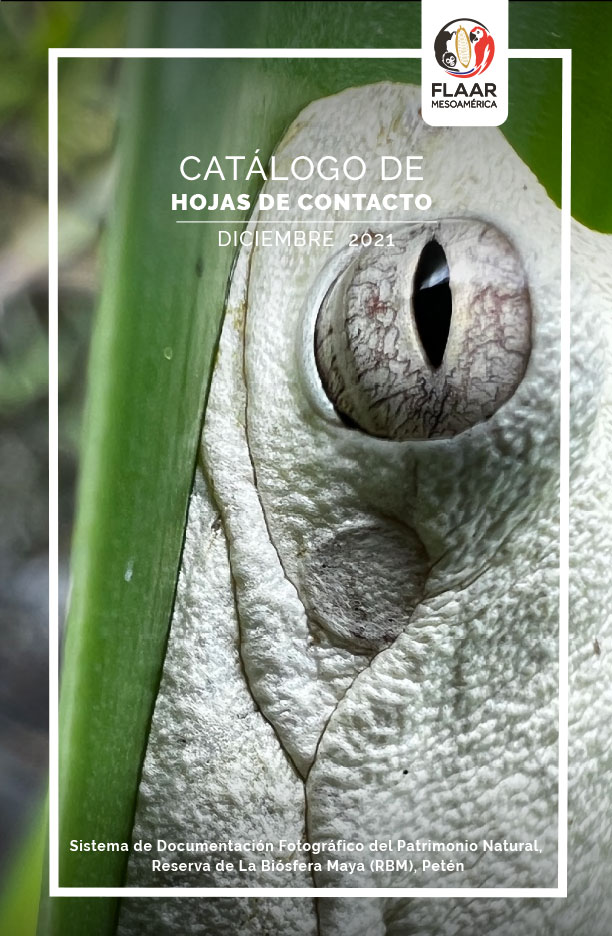The Biodiversity Documentation Project in the Main Protected Areas of the Reserva de la Biósfera Maya (RBM) in Petén is a cooperative effort between FLAAR (USA) through the non-profit registered in Guatemala, FLAAR Mesoamerica and the National Council of Protected Areas (CONAP) to complement the registry of species of fauna, flora, fungi, lichens, and ecosystems that form part of the natural heritage of Guatemala. This project was initiated with the agreement signed in March 2021 and will be continued for five years (2021-2025). We have documented various species of fauna, but for our ethnozoological interests, we have focused on spider monkeys, howler monkeys, all waterbirds, raptors -especially the Snake Hawk which appears as the main deity of birds for over a thousand years. in the art of Izapa, Peten, Campeche, Chiapas, Belize and then became the main giant bird of the mythology of the Popol Vuh-. We are also studying iguanas, frogs, bats, and butterflies. Jaguars, pumas, ocelots, margays and jaguarundis do not sit and pose for a photographer, but we do research on these felines and have more than 6 hours of lectures available on “Jaguars in Mayan art, Cacaxtla murals and Teotihuacan murals “. For flora, we have also documented several interesting native species, but what have capturated us, are ethnobotany aspects. We have identified the 4-petelled flowers that are very common on Tepeu 2 plates, bowls and vases. We have recognized the Fleur de Lis flower (with the knowledge of Charles Zidar of past decade); plus, the differences between the Pseudobombax ellipticum flower -the most likely inspiration for Fleur de Lis- and the Pachira aquatica flower -relatives of each other in size, shape and amazing beauty-. We have also found additional flowers that we have documented decades of field work to study Nymphaea ampla, the white water lily that is the flower most often pictured on murals, bas-relief sculpted stelae, lintels, wall panels, and all types of ceramics: vases, bowls, and plates especially of the Early Classic and Late Classic.
The biodiversity documentation developed by the FLAAR Mesoamérica team is carried out using high resolution photography equipment (new generation mirrorless Sony Alpha and new mirrorless Canon cameras). It is essential for field work that both cameras and lenses have in-camera stabilization, since there is no time available to unpack and set up a tripod when hiking many hours through narrow jungle trails or wading through a swamp or edge of a swamp. It is crucial to record and document biodiverse ecosystems through aerial photography and video with a drone camera of acceptable resolution. A helpful donation allowed us to have a DJI Mavic 3 drone in addition to the DJI Mavic 2Pro we already have. So, we are documenting ecosystems never visited by any professor or researcher because there is no paved road or anywhere nearby; they have to walk hour after hour, mile after mile, and return to their tents as there is no research center or biological research station nearby.
Our dream is that a benefactor can donate so we can have available a Phase One 100Megapixel UAV aerial camera carried by a DJI Matrix600 drone with lenses made in Germany to capture images of endangered fragile ecosystems. With multi-spectral software and a trained user, it is possible to identify each major pertinent species in each ecosystem and map them. Our goal is to make aerial coverage of ecosystems such as grassland savannas, cibal (sawgrass) savannas, tasiste palm savannas, marshes, lagoons, aguadas, lakes and rivers available to all scholars and students so they can see what was available 2000 years ago, rather obviously the ancient Maya used all these areas. We are not doing excavation because our project is dedicated to flora, fauna, and ecosystems, but our documentation is intended to help all other scholars. We also have macro lenses for each camera to record details of every aspect of a tropical flower or insect. We are especially interested in insects that are very commonly painted or incised on Tepeu 1 Maya ceramic bowls (plus crocodiles and all the fauna that were sacred to the Classic Maya). In one aguada inside a tasistal/open grassland savanna that we devoted hours to find on satellite photos and then hiked to, we found almost a dozen baby crocodiles all floating in the shallow aguada water so we could photograph them close-up (fortunately their parents were nowhere around). FLAAR Mesoamérica has more than 10 years of experience in Guatemala using the latest technology and digital photographic equipment and has staff who are dedicated, motivated and inspired to conduct research and field work in remote areas facing the conditions and challenges of in-situ species documentation. FLAAR Mesoamerica inherits the equipment and experience and team of over 50 years of FLAAR field work and photography. All records are being donated to those in charge of each investigated area of national parks, biotopes, nature reserves etc: (photos, videos, tabulations, and lists of species found) and may be used to update the Master Plans and reports that are being made for each area. These data may be analyzed by scientists or the CONAP team to enrich current and future research; The documentation is expected to be a contribution to the inventory of species present in the country. In addition, the results of the biodiversity documentation are processed by the team of designers and editors from FLAAR Mesoamerica to develop educational material for the public, available in our E-library. Our goal is to make educational material available to all the local Guatemalan conservation organizations, wildlife conservation entities around the world. Students, scientists, experts, tourists, explorers, photographers, and nature lovers, and motivate them to get closer, get to know the area, and marvel at the species that FLAAR Mesoamérica documents in each Mayan ecosystem. After processing the material for professors and students we then separately prepare books for kindergarten and grade school children in Spanish, local Mayan language, and English. Our www.MayaToons.org shows you the textbooks, coloring books, infographic posters and additional educational material that we prepare for schools in Peten and Alta Verapaz.
These catalogs contain the scientific name (as far as they were able to identify), common name and photographs of the flora, fauna and funga documented in each field trip during the project.
Nicholas Hellmuth
Vivian Díaz from 2021 to 2022
Nicholas Hellmuth
MS. Andrea Sánchez Díaz
Nicholas Hellmuth
Vivian Díaz from 2021 to 2022
Nicholas Hellmuth
MS. Andrea Sánchez Díaz
Nicholas Hellmuth
Vivian Díaz from 2021 to 2022
Nicholas Hellmuth
MS. Andrea Sánchez Díaz
Nicholas Hellmuth
Vivian Díaz from 2021 to 2022
Nicholas Hellmuth
MS. Andrea Sánchez Díaz
Nicholas Hellmuth
Vivian Díaz from 2021 to 2022
Nicholas Hellmuth
MS. Andrea Sánchez Díaz
Nicholas Hellmuth
Vivian Díaz from 2021 to 2022
Nicholas Hellmuth
MS. Andrea Sánchez Díaz
Nicholas Hellmuth
Vivian Díaz from 2021 to 2022
Nicholas Hellmuth
MS. Andrea Sánchez Díaz
Nicholas Hellmuth
Vivian Díaz from 2021 to 2022
Nicholas Hellmuth
MS. Andrea Sánchez Díaz
Nicholas Hellmuth
Vivian Díaz from 2021 to 2022
Nicholas Hellmuth
MS. Andrea Sánchez Díaz
Nicholas Hellmuth
Vivian Díaz from 2021 to 2022
Nicholas Hellmuth
MS. Andrea Sánchez Díaz
Nicholas Hellmuth
Vivian Díaz from 2021 to 2022
Nicholas Hellmuth
MS. Andrea Sánchez Díaz
Nicholas Hellmuth
Vivian Díaz from 2021 to 2022
Nicholas Hellmuth
MS. Andrea Sánchez Díaz
Nicholas Hellmuth
Vivian Díaz from 2021 to 2022
Nicholas Hellmuth
MS. Andrea Sánchez Díaz
Nicholas Hellmuth
Vivian Díaz from 2021 to 2022
Nicholas Hellmuth
MS. Andrea Sánchez Díaz
This current page is on our biological and ecological documentation project in the Reserva de la Biósfera Maya. We also had a separate documentation project 2019-2020 in the eastern half of the Municipio de Livingston, Izabal, Guatemala; and from August 2018 to July 2019 we did field work in the Parque Nacional Yaxha, Nakum and Naranjo, an appropriate location since FLAAR was founded in 1969 to work at Yaxha 1970-1974 to map the Yaxha area in depth, the Topoxte Island maps and to improve the Nakum map. Plus, circa 1973 Nicholas Hellmuth introduced to FYDEP and to the president of Guatemala found the urgent need to declare a national park to protect this area. Other helpful conservation-interested individuals intelligently added the Naranjo-Sa’al area that is adjacent to the Yaxha-Nakum area. You can visit our other websites delve into topics of ethnobotany, ethnozoology and archeology:
The Biodiversity Documentation Project in the
Main Protected Areas of the Reserva de la Biósfera Maya (RBM)
About our photographic equipment and team
The project team work year after year to document the richness of species that inhabit the different ecosystems within the Reserve de la Biósfera Maya (RBM) such as tropical forests, bajo forests, lakes, lagoons, rivers, wetlands, savannas, and others.Documentation Results
Contact Sheets Catalogues
2022
Details
General Direction
Proyect Manager
Photographers
Haniel López Designer
María Alejandra GutiérrezDetails
General Direction
Proyect Manager
Photographers
Haniel López Designer
María Alejandra GutiérrezDetails
General Direction
Proyect Manager
Photographers
Haniel López Designer
María Alejandra GutiérrezDetails
General Direction
Proyect Manager
Photographers
David Arrivillaga
Roxana Leal
Victor Mendoza Designer
María Alejandra GutiérrezDetails
General Direction
Proyect Manager
Photographers
David Arrivillaga
Roxana Leal
Vivi Díaz Designer
María Alejandra GutiérrezDetails
General Direction
Proyect Manager
Photographers
Andrea Bracamonte
Roxana Leal
Boris Llamas Designer
María Alejandra GutiérrezDetails
General Direction
Proyect Manager
Photographers
Haniel López Designer
María Alejandra Gutiérrez2021
Details
General Direction
Proyect Manager
Photographers
David Arrivillaga
Roxana Leal
Victor Mendoza Designer
María Alejandra GutiérrezDetails
General Direction
Proyect Manager
Photographers
David Arrivillaga
Roxana Leal
Vivi Díaz Designer
María Alejandra GutiérrezDetails
General Direction
Proyect Manager
Photographers
Andrea Bracamonte
Roxana Leal
Boris Llamas Designer
María Alejandra GutiérrezDetails
General Direction
Proyect Manager
Photographers
Haniel López Designer
María Alejandra GutiérrezDetails
General Direction
Proyect Manager
Photographers
Haniel López Designer
María Alejandra GutiérrezDetails
General Direction
Proyect Manager
Photographers
Haniel López Designer
María Alejandra GutiérrezDetails
General Direction
Proyect Manager
Photographers
Haniel López Designer
María Alejandra Gutiérrez

